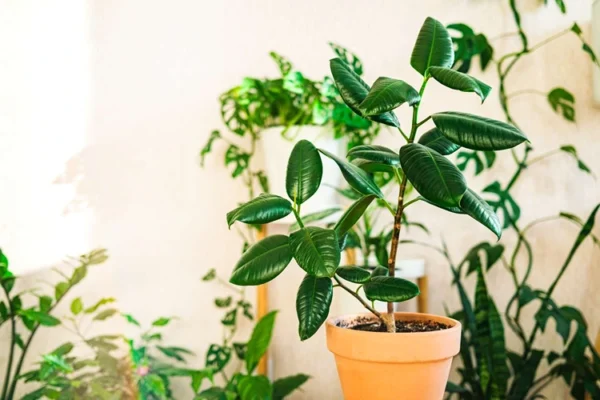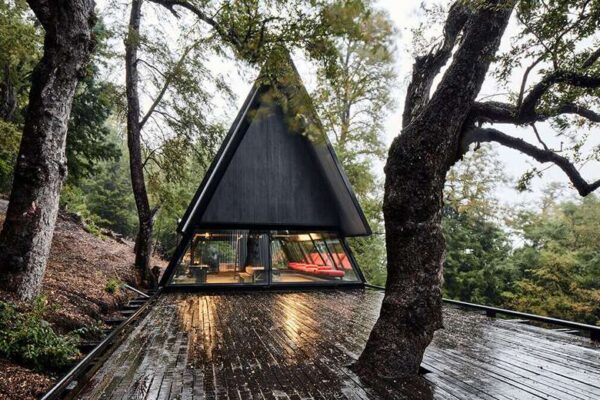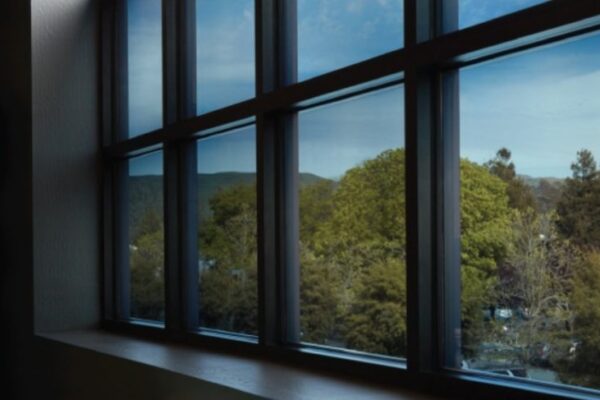How to Grow and Care for Common Honeysuckle
During the summertime in the Southern regions, one cannot escape the pervasive and delightful fragrance of common honeysuckle (Lonicera periclymenum). These captivating vines, with their vibrant green color, gracefully wind their way up trellises, decorate arbors, and burst into exquisite blossoms as soon as the warm weather arrives. The air becomes infused with clouds of sweet, honeyed aroma, instantly evoking the essence of a Southern summer. Honeysuckle vines encompass a diverse array of species, some of which possess a highly invasive nature, while others are non-invasive and make excellent choices for garden cultivation. Whether encountered in the untamed wilderness, where they climb trees and intertwine with shrubs, or adorning various surfaces and structures, the captivating scent of honeysuckle alerts your senses long before you lay eyes on its presence. Occasionally, honeysuckle is employed as ground cover, providing a lush carpet of foliage.
The allure of honeysuckle lies in its long, tubular blooms, which emit a captivating fragrance and display an array of captivating hues such as yellow, white, orange, and pink. These petite flowers act as magnets, beckoning hummingbirds, bees, and butterflies to your garden, as they are brimming with nectar that entices these delightful visitors from both near and far. Complementing the blossoms are the vines’ dark green leaves, which add to the aesthetic appeal. By skillfully training honeysuckle shrubs into hedge formations or incorporating them into container plantings, you can create captivating displays. Regular pruning is necessary to ensure a continuous blooming cycle throughout the season, ensuring an enduring source of visual and olfactory pleasure.

Caring for Common Honeysuckle
Common Honeysuckle is a beloved plant due to its remarkable ability to withstand the scorching heat and extreme conditions experienced during the relentless Southern summers. It is a resilient grower that can thrive even in challenging environments. With its rapid spreading nature, it is often cultivated as ground cover and is available in both climbing vine and shrub varieties. Providing support through staking can be beneficial during the initial establishment of climbing honeysuckle.
To ensure optimal growth, moderate temperatures and adequate sunlight exposure are crucial for these plants during the summer season. Regular watering is essential, and it is advisable to use well-draining soil that is rich in nutrients, allowing the plants to thrive. In regions where the soil lacks fertility, it may be necessary to amend the area with appropriate fertilizers. Additionally, depending on the specific location, regular pruning is recommended to prevent the honeysuckle from becoming invasive and to maintain its controlled growth.
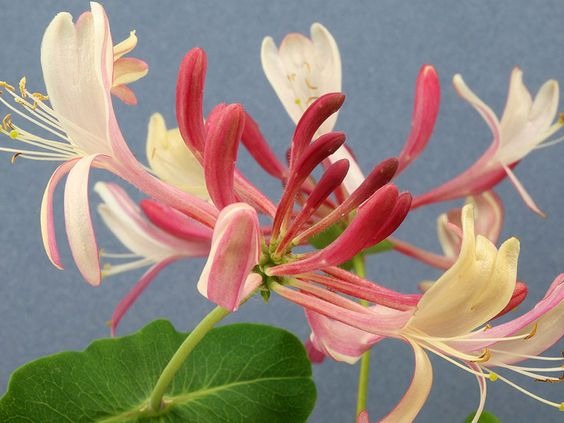
Light Requirements
The common honeysuckle is a resilient plant that can tolerate high temperatures. To thrive, it requires a minimum of six hours of direct sunlight each day. While it can grow in areas with partial shade, the frequency of blooming may be reduced. For optimal growth, it is recommended to plant honeysuckle in a location that resembles its natural woodland habitat, providing some shade to the roots and utilizing stakes to encourage its climbing nature.
Soil Preferences
Common honeysuckle exhibits adaptability to various soil types, although it prefers organically rich soil that is moist and well-drained. As long as the soil is fertile and not excessively waterlogged, honeysuckle can grow well. It thrives in a soil pH that is neutral, allowing for slight acidity or alkalinity in the environment.
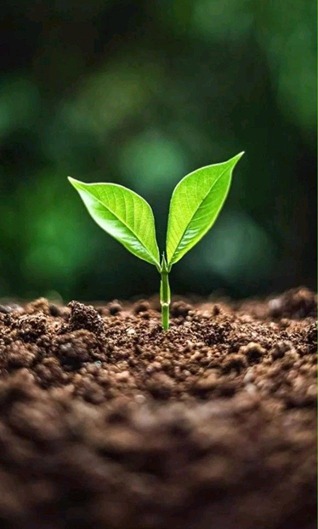
Watering Needs
In regions prone to prolonged summer droughts, it is important to ensure adequate watering for honeysuckle, particularly for newly established plants. Once established, honeysuckle displays a certain level of tolerance to drought conditions, but the soil should remain moist. It is recommended to provide about one inch of water per week through rainfall or manual watering. Applying a layer of mulch or incorporating organic compost can aid in retaining moisture for the honeysuckle. As honeysuckle climbs, it is essential to ensure that the roots receive water at the base, particularly when structures provide protection from rainfall exposure.
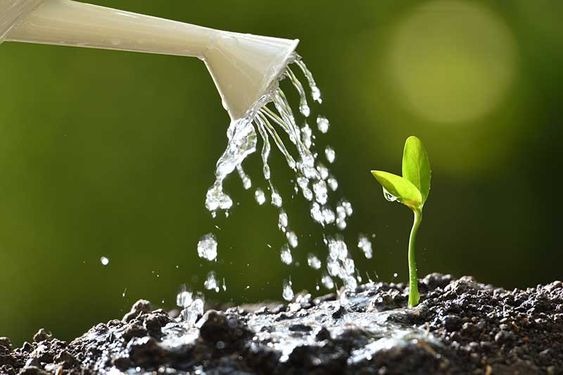
Temperature and Humidity
The common honeysuckle is known for its ability to tolerate high temperatures and exhibits a moderate level of resistance to cold conditions. It thrives best in regions where the temperatures range from 55°F to 85°F. However, excessive humidity can hinder its growth as honeysuckle requires adequate airflow to prevent the formation of fungal diseases.
Fertilizer Application
In cases where the planted area lacks organically rich nutrients, the honeysuckle plant will benefit from the addition of fertilizer. During springtime, it is recommended to use a balanced fertilizer and ensure thorough watering of the area. For optimal growth, one or two fertilizer supplements can be applied annually, starting in February. If the honeysuckle plant is experiencing limited bloom production, the addition of a nitrogen-based fertilizer, such as 2-10-10, can be beneficial. However, caution should be exercised as excessive use of nitrogen fertilizer may stimulate excessive foliage growth and make the plant more susceptible to pest infestation.
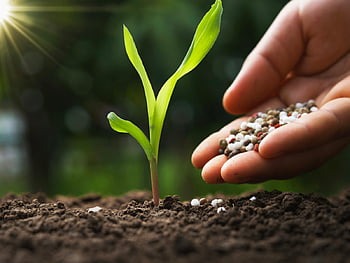
Varieties of Honeysuckle
Honeysuckle, being a type of fragrant vine, encompasses several popular varieties, including:
- Trumpet Honeysuckle (Lonicera sempervirens): Also known as coral honeysuckle, this particular variety is widely encountered. It is characterized by its drought-tolerant nature and non-invasive growth habit. Trumpet honeysuckle produces charming red and pink blooms and thrives exceptionally well in the Southern regions. Native to the eastern United States, it holds a special allure for ruby-throated hummingbirds, who are attracted to its nectar-rich flowers.
- Japanese Honeysuckle (Lonicera japonica): This honeysuckle variety is notorious for its invasive tendencies. Possessing fragrant flowers, it is a vigorous climber that often wraps itself around trees and shrubs. The Japanese honeysuckle is known for its rapid growth and can quickly overtake surrounding vegetation if left unchecked.
- Winter Honeysuckle (Lonicera fragrantissima): Unlike the previously mentioned varieties, the winter honeysuckle presents itself as an invasive shrub. It produces lovely white flowers that emerge during the late winter and early spring. This variety is known for its strong fragrance, which adds a delightful scent to the winter landscape.
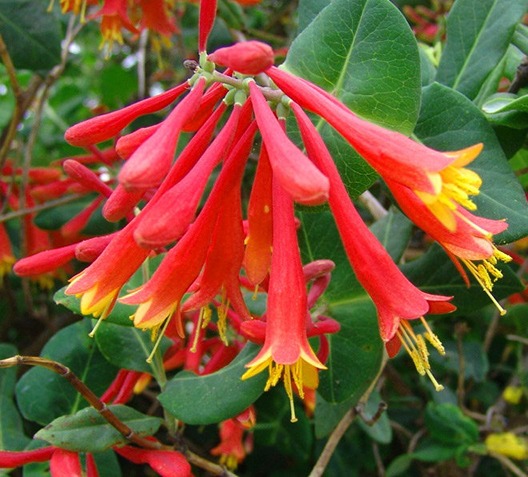
Pruning Instructions for Common Honeysuckle
Proper pruning and training are essential for maintaining the robust climbing nature of the common honeysuckle plant. Once the honeysuckle has established itself, pruning becomes necessary to ensure its overall health and vitality. This involves the removal of dead and damaged branches. Additionally, employing stakes and ties can assist in guiding the plant’s growth along walls or trellises.
Throughout the year, vines can be pruned for aesthetic purposes, enhancing their appearance. Alternatively, in the fall or winter, if the growth becomes unruly, the plant can be cut back to a height of two feet above the ground. For honeysuckle shrubs, pruning is recommended when the blooms have faded or fallen during the spring season. In such cases, it is important to remove any damaged branches, cutting them back below the leaf node.
It is crucial to time pruning appropriately to preserve the honeysuckle’s blooming potential. After the last blooming period in the fall, it is advised to perform pruning, cutting approximately one-third of the plant’s growth. This precaution ensures that new buds are not inadvertently removed, as honeysuckle blooms on the previous year’s growth during the spring season.

Propagation Methods for Common Honeysuckle
The common honeysuckle can be propagated using semi-ripe cuttings, layering, or by growing from seeds. While each method can yield new honeysuckle plants, using cuttings is a simple and effective way to multiply your honeysuckle. Here’s a step-by-step guide on propagating common honeysuckle using cuttings:
- Select the right time and material: In the morning, during the summer months of July or August, choose healthy stems from the honeysuckle plant. The ideal cuttings should be around six inches long, displaying firm yet flexible stems. Make sure to cut the stems at an angle for better rooting.
- Prepare the cuttings: Remove the lower leaves from the cuttings, leaving a few leaves at the top to aid in photosynthesis. This helps to redirect the plant’s energy towards root development.
- Provide a suitable growing medium: Fill a container with well-draining potting soil. Ensure the container has adequate drainage holes. The soil should be moist but not waterlogged.
- Plant the cuttings: Insert the prepared cuttings into the potting soil, ensuring they are planted deep enough to provide stability. Gently press the soil around the base of each cutting to secure them in place.
- Maintain the right conditions: Place the container in a location with indirect sunlight or partial shade. Keep the soil consistently moist but avoid overwatering, as excessive moisture can lead to rot. Mist the cuttings occasionally to maintain a humid environment.
- Monitor root development: After a few weeks, roots should start to emerge from the cuttings. You can gently tug on the cuttings to check for resistance, indicating that roots have formed.
- Transplant the rooted cuttings: Once the roots are well-established, carefully transplant the rooted cuttings into their desired locations, such as pots or garden beds. Ensure the new planting site provides suitable sunlight and well-drained soil for the honeysuckle to continue growing.
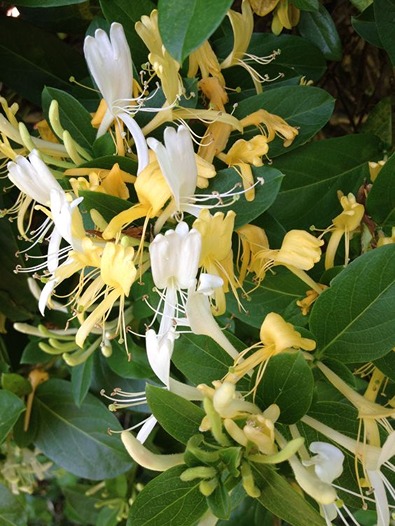
Growing Common Honeysuckle from Seeds
If you wish to propagate common honeysuckle, you can opt to grow it from seeds. This method allows you to save seeds from the vibrant red berries that naturally fall during autumn or acquire them from a garden center. Follow the steps below to grow common honeysuckle from seeds:
Seed Collection: Gather the seeds from the bright red berries that have dropped in the fall. Alternatively, you can purchase seeds from a reliable garden center.
Sowing Options: There are two ways to sow the seeds, depending on the time of year and your preference:
- Direct Sowing: Plant the seeds directly into a container filled with potting soil. Ensure the soil is well-draining and of good quality.
- Cold Stratification: Store the seeds in a cold location, such as the refrigerator, to mimic winter conditions. Mix the seeds with compost before placing them in the refrigerator for approximately 12 weeks. This cold treatment enhances germination. After this period, remove the seeds from the refrigerator in the spring and proceed to plant them.
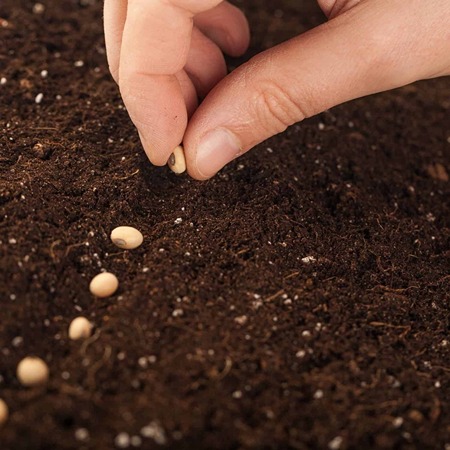
Overwintering Care
Proper winter care is crucial for the survival of honeysuckle, taking into account the specific variety and the temperature conditions of the region. Consider selecting a hardier honeysuckle variety if you anticipate colder weather that may affect the plant’s viability.
Follow these steps to provide adequate winter care for honeysuckle:
- Mulching: Prior to winter, apply a layer of straw or organic compost around the base of the plant, approximately three to four inches thick. This mulch acts as insulation and protects the roots during temperature drops.
- Frost Protection: To shield the plant from frost, consider using a burlap cloth covering. Wrap it around the plant, providing an additional layer of protection against harsh winter conditions.
- Removal of Coverings: In the spring, after the last frost has passed, remove the coverings and excess mulch. This allows the honeysuckle to acclimate to the warmer temperatures and begin its growth cycle.
- Winter Fertilization: Avoid fertilizing honeysuckle during the winter, as dormant plants are unable to effectively absorb nutrients. Reserve fertilization for the active growing season when the plant can utilize the nutrients to support its development.
Pest and Disease Management
The common honeysuckle is susceptible to various diseases and pests that can affect its health. Here are some common issues and how to manage them:
Fungal Diseases
Leaf blight is a common fungal disease that causes curling or deformation of the foliage. To prevent the spread of disease, promptly prune and remove any damaged or diseased foliage. Additionally, powdery mildew and leaf spots may occur in humid climates. Providing good air circulation and avoiding overhead watering can help reduce the risk of these fungal infections.

Pest Infestations
The common honeysuckle may attract pests such as aphids, scale insects, and caterpillars. To control these pests, you can use insecticidal soap, which is effective against these common offenders. Alternatively, gently spraying the plant with water can help dislodge and remove pests.
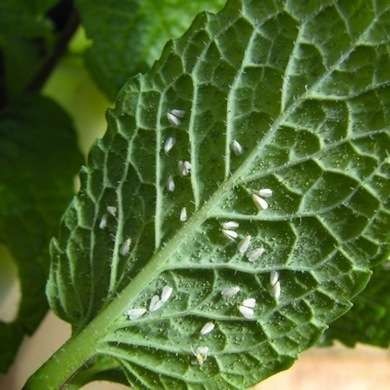
How to Promote Blooming in Common Honeysuckle
To encourage abundant blooming in common honeysuckle, follow these guidelines:
- Sunlight Exposure: Provide the honeysuckle plant with a minimum of six hours of direct sunlight each day. Adequate sunlight is crucial for promoting blooming. Honeysuckle planted in shady areas may experience reduced blooming frequency.
- Patience and Establishment: It is important to note that common honeysuckle may take some time to establish itself before reaching its full blooming potential. Be patient, as it can take at least three years for younger honeysuckle plants to mature and produce abundant blooms.
- Proper Care: Maintaining proper care and nurturing the honeysuckle plant will contribute to better blooms and foliage. This includes regular watering, ensuring the soil is moist but not waterlogged, and providing adequate drainage. Additionally, applying a balanced fertilizer during the active growing season can provide essential nutrients for healthy growth and blooming.
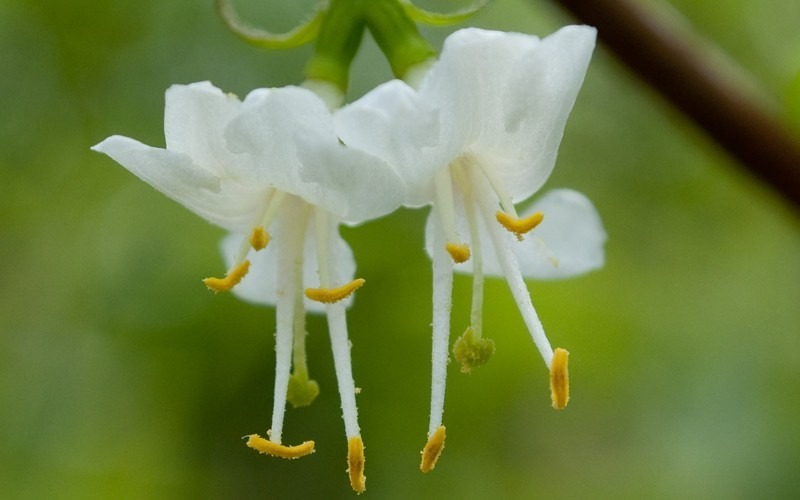
Common Issues
While common honeysuckle is generally resistant to diseases and pests, there are still a few problems that can arise. The most common pest issue is aphid infestation, while other problems may stem from improper care.
Curling Leaves
When honeysuckle is affected by aphids, the foliage may become curled or distorted due to the pests’ excretions, which can lead to mold growth. Aphids are more likely to attack plants growing in shady environments. To address this issue, it is necessary to remove infested branches or leaves and apply insecticidal soap, which can effectively control aphids.
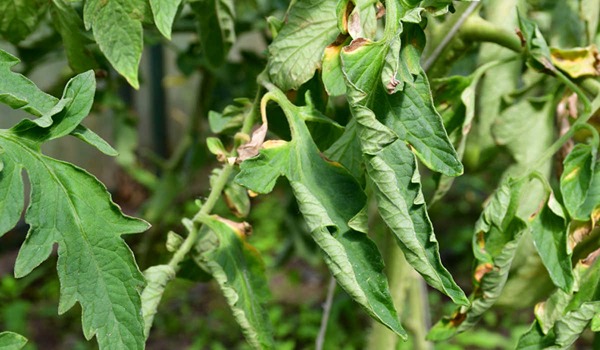
Leaves Turning Black/Brown
In some cases, common honeysuckle can be affected by a plant pathogen called sudden oak death, which can spread to garden-grown honeysuckle through the soil. However, this is more commonly observed in wooded areas. When infected, the stems and foliage of honeysuckle may turn brown or black around the edges. If caught early, removing the damaged or diseased branches may help save the plant. Additionally, leaves turning brown can also be caused by leaf spots or excessive fertilizer application.

